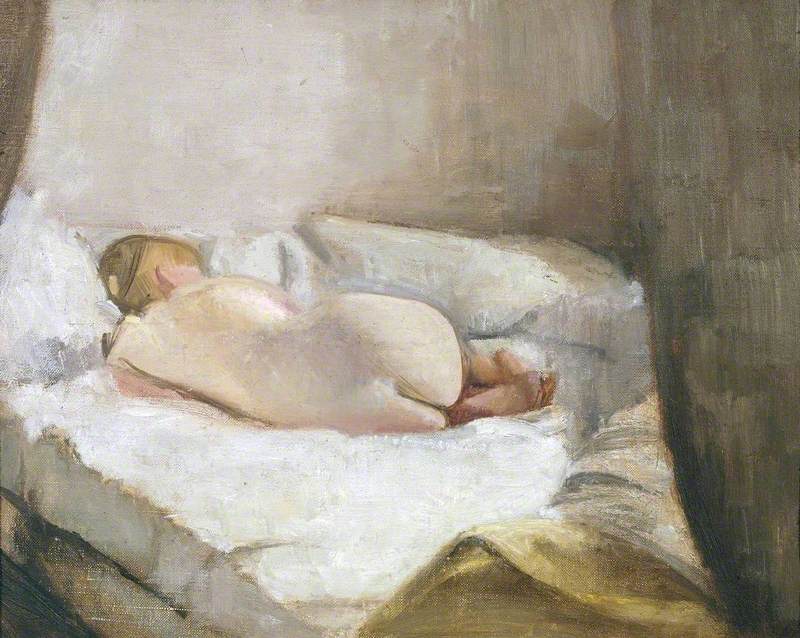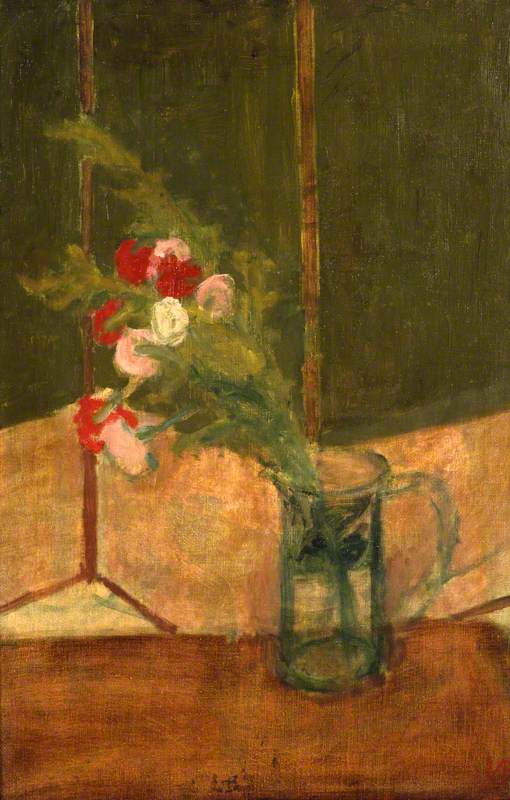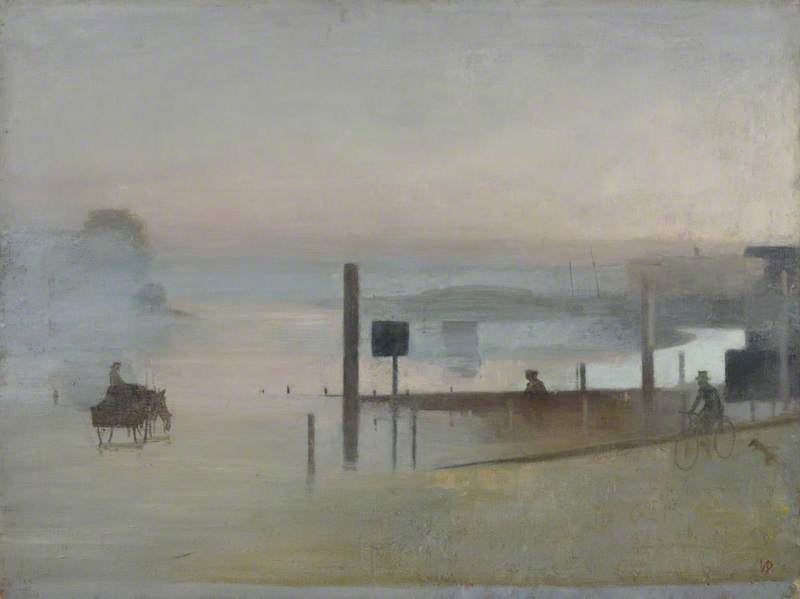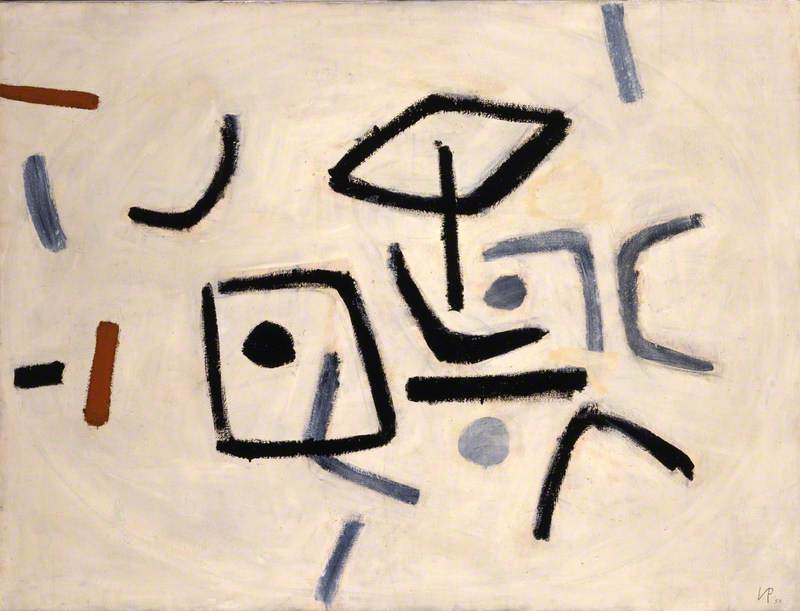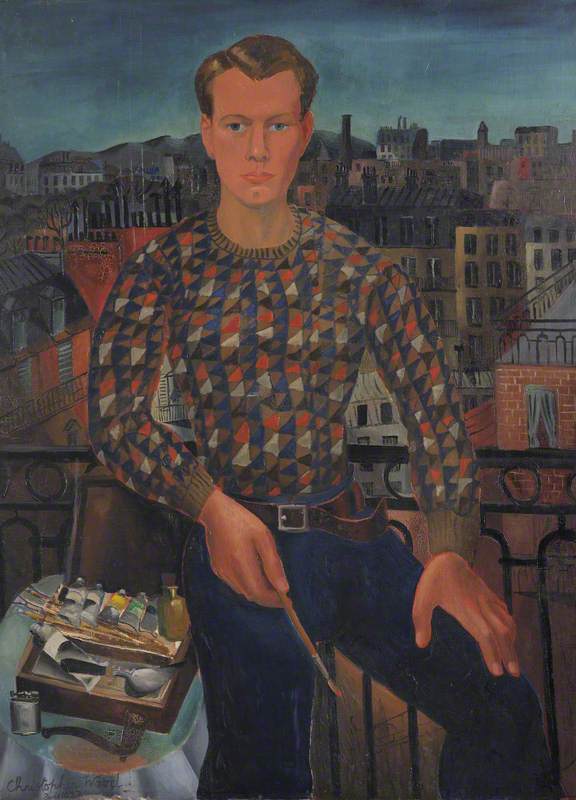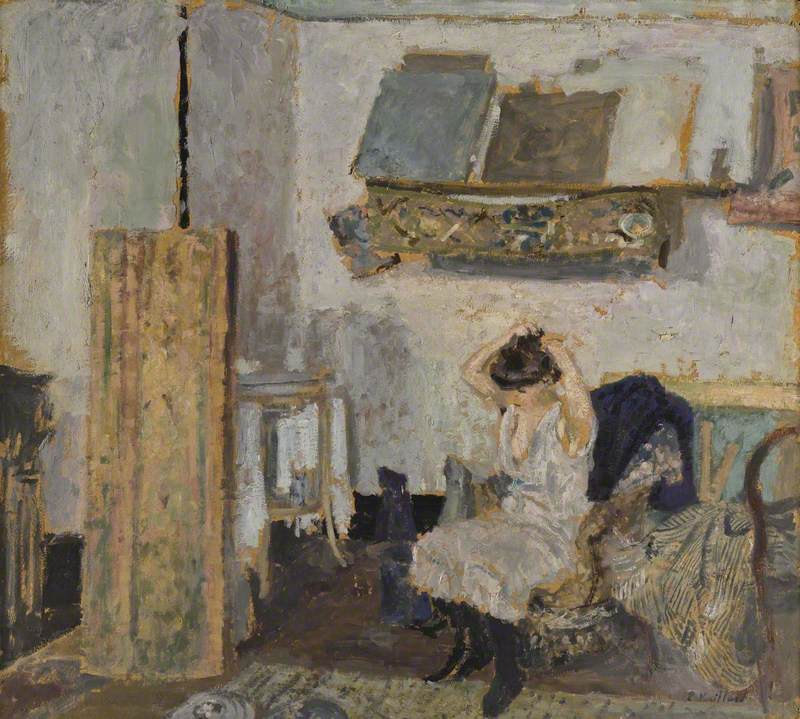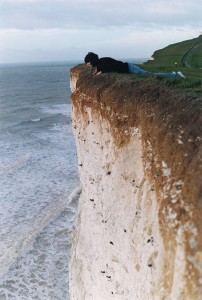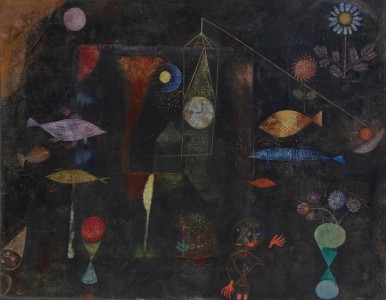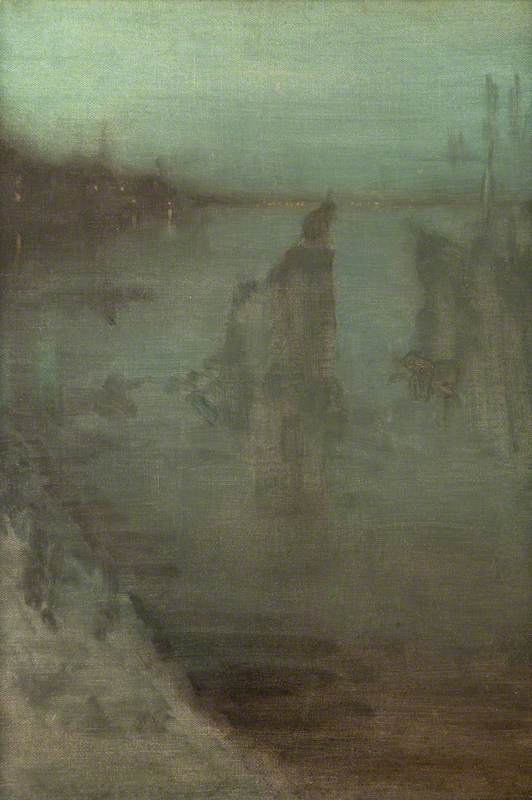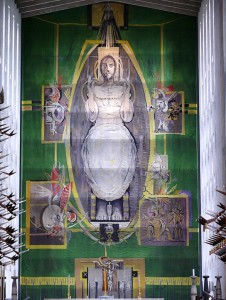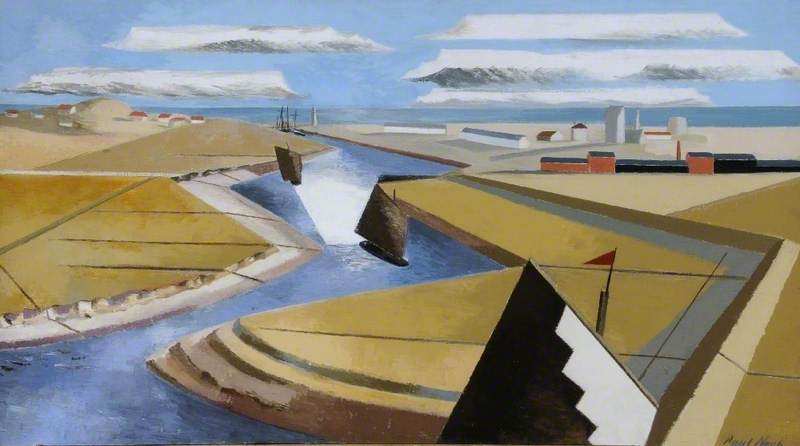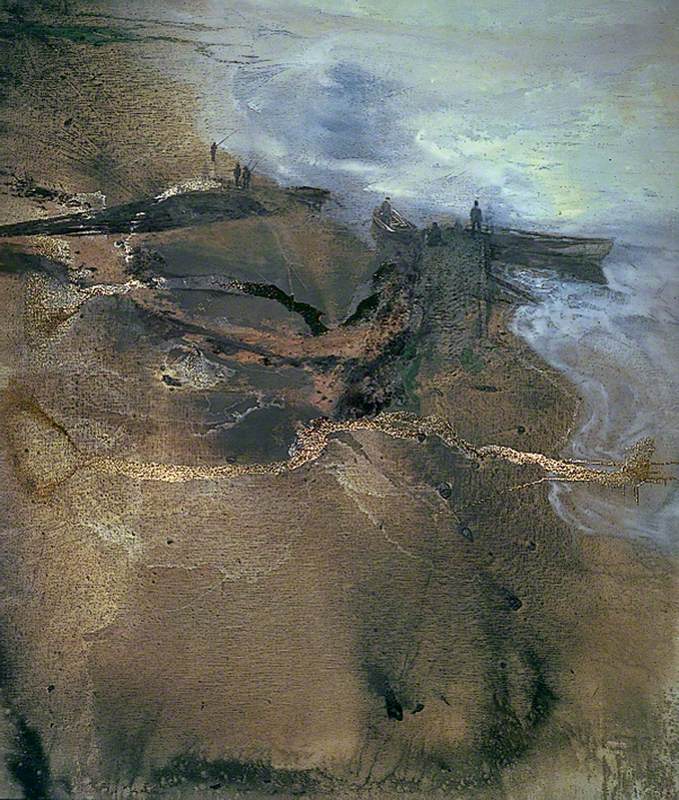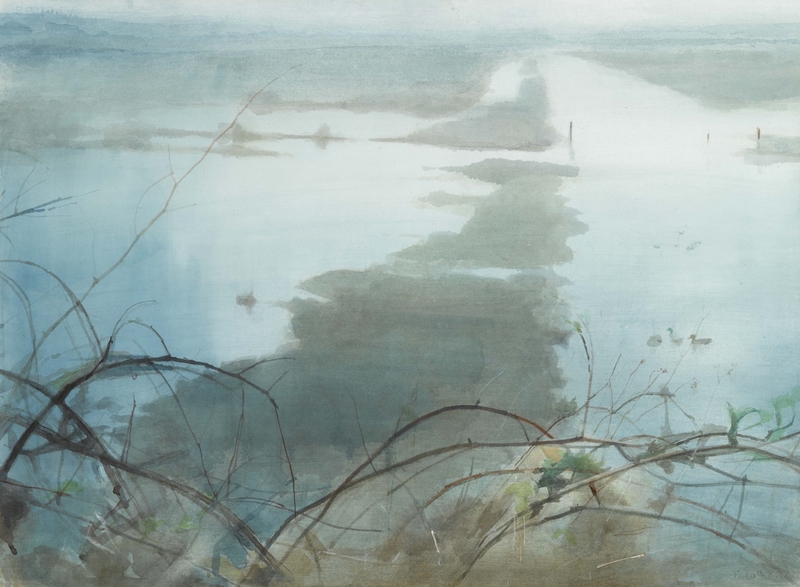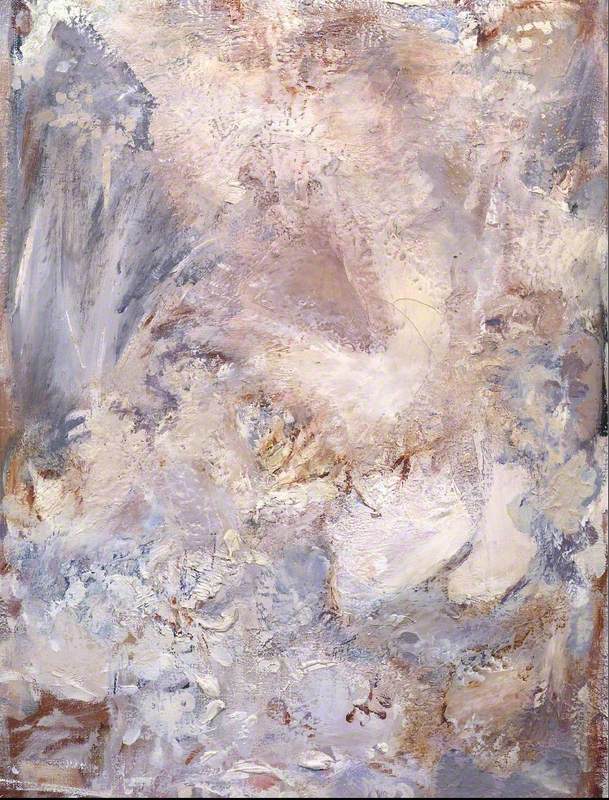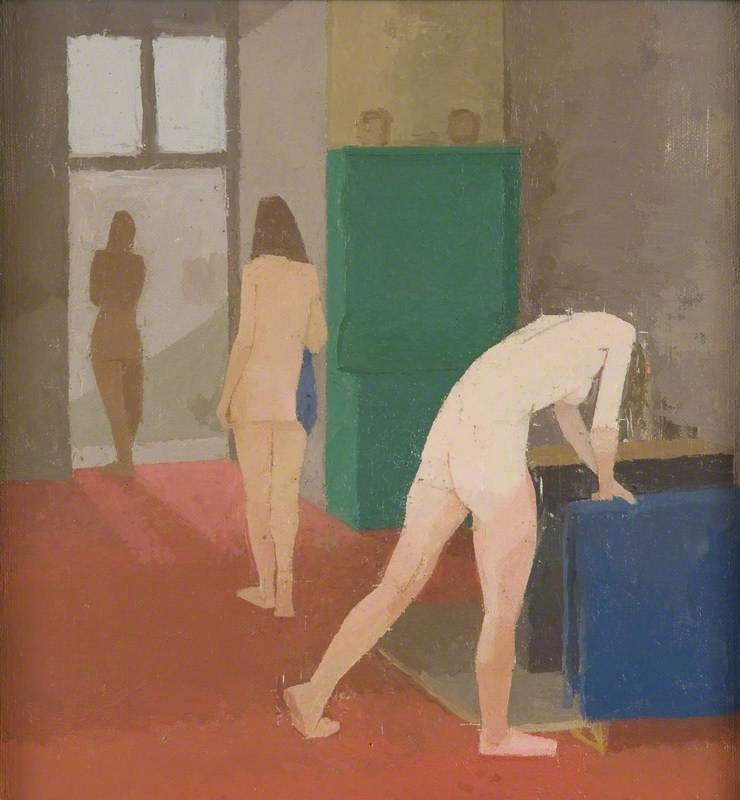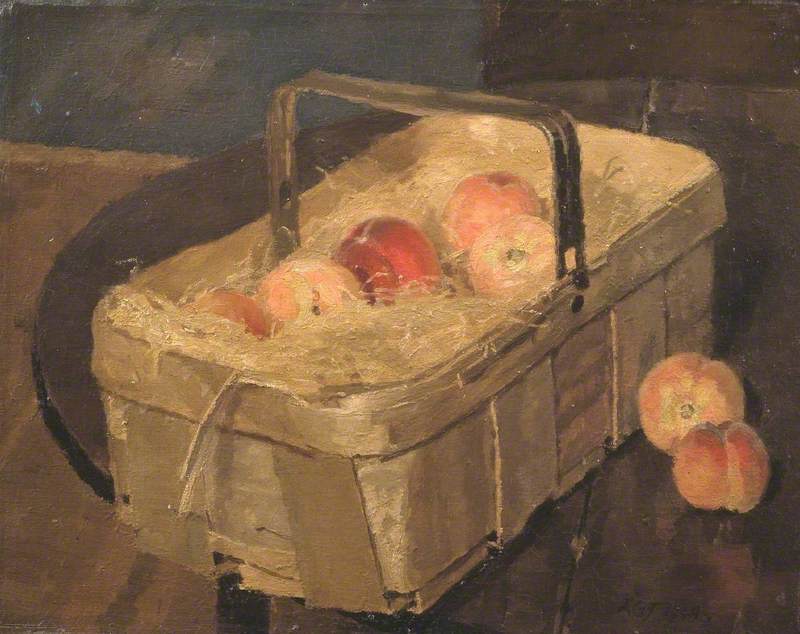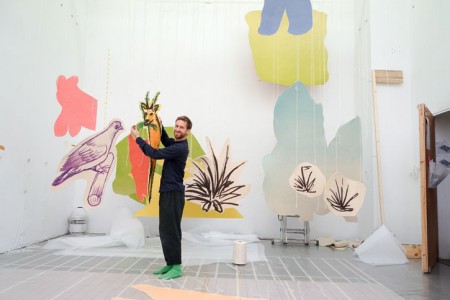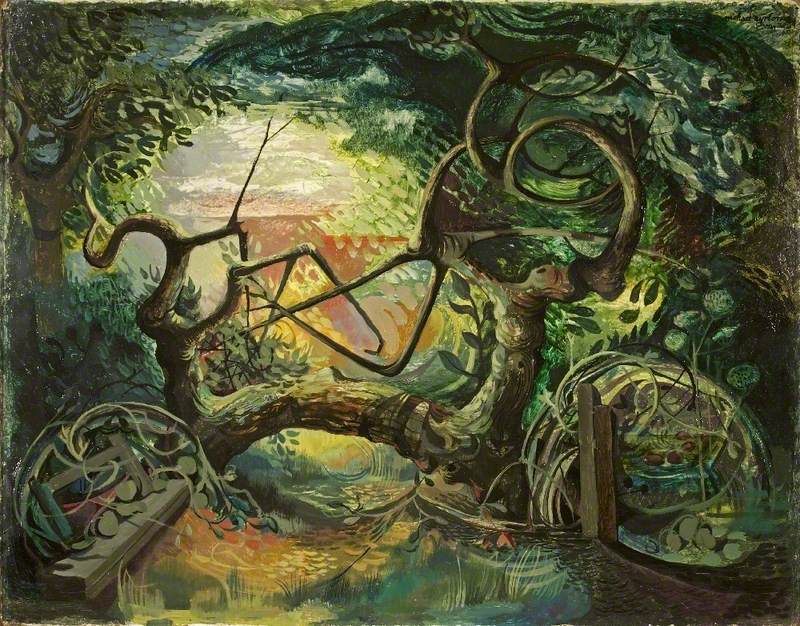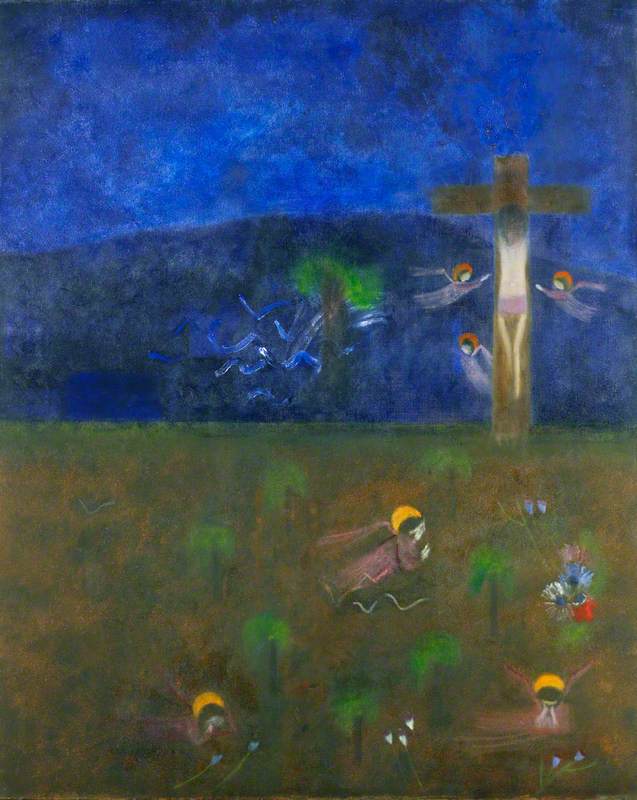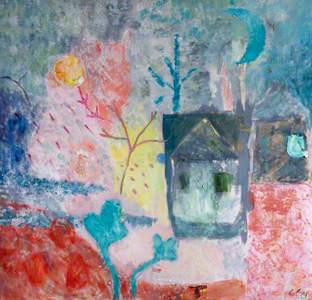If there were a patron saint for Sunday painters then surely Victor Pasmore (1908–1998) would have been a strong contender in the early years of his long career. The exhibition 'Towards a New Reality' takes the viewer from the artist's earliest days as a talented amateur, to his becoming a leading exponent of post-war abstraction, and one of Britain's most distinguished artists of the twentieth century. There were of course many exhibitions of Pasmore's work before his death in 1998, but few have considered in detail his trajectory from figuration to abstraction and beyond this to his involvement in 1960s town planning and his unique contribution to the latter.
The Snowstorm: Spiral Motif in Black and White
1950–1951
Victor Pasmore (1908–1998) 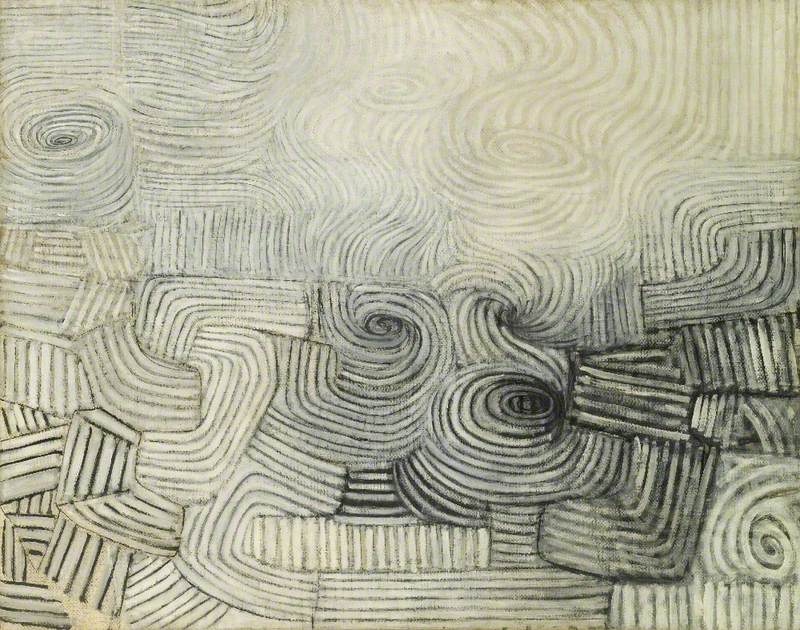
Showing an early talent as a pupil at Harrow where he attracted the attention of his art master and the recognition of school prizes, a planned university education was abandoned with the death of his father and the necessity to earn a living. In 1927, aged 19, Pasmore started full-time work as a clerk in the Public Health Department at the London County Council (LCC). He was to remain in post until 1938. It is a mark of the man and the artist he had determined to become that he said of the time: 'I was furious at not being able to continue with art; but I wasn't going to let the LCC get in my way'.
The intervening years saw Pasmore undertake his own art education and emerge under the patronage of one of the most influential figures of the twentieth-century art establishment. First taking a studio in Bloomsbury, he attended evening classes at the nearby Central School of Arts and Crafts and at weekends painted and visited the National Gallery. At the former he encountered the teachings of A. S. Hartrick who had worked in France with Gauguin, known Van Gogh and exhibited at the Paris salon; in the latter, he looked at the art of Turner and the Old Masters – being unable to view, outside publications, those of the French painters Hartrick had introduced to his students.
The earliest of Pasmore's work in the exhibition reflects the palette and character of Chardin's still life compositions, and a knowledge of the art of Cézanne. In a remarkably short time however he started the process of advancement in his art and his standing within the London art world. His painting was now influenced by the work of contemporary French artists, in particular that of Pierre Bonnard and he became close friends, among others, with William Coldstream and Claude Rogers. They were members of the London Artists' Association which he swiftly joined, also becoming – in 1934 – a member of the London Group. Pasmore was still working full-time in 1937 when he became the co-founder, with Coldstream and Rogers, of the school of painting that became known as the Euston Road School.
The teaching and principles of the School were firmly founded on drawing and painting from life with close observation and realism key notes. For Pasmore, who had never attended an art school and who now found himself on the teaching staff, it was he said 'as much of an education for me as the students'. Kenneth (later Lord) Clark, who had recently been appointed as the youngest Director of The National Gallery, was a champion of the School funding its first prospectus and later offering financial support for its founders. In Pasmore's case this support translated into a stipend which finally released him from his office job and provided the means and security to take the next step in his artistic development. The arrangement was to continue for several years and turn Pasmore into a leading figure in 1940s figurative painting.
The outbreak of war saw the closure of the Euston Road School and the dispersal of its staff. Coldstream became an official war artist, Graham Bell signed up and was killed in action and Pasmore registered as a conscientious objector. He was conscripted, deserted, briefly imprisoned and finally – through the good offices of Clark – granted exemption from service. In these circumstances Pasmore was able to devote himself to the consolidation and advancement of his art. Newly married to Wendy (née Blood) a fellow artist, and having suffered bombing in their central London flat, the couple moved to the west of the capital, first to Chiswick and then Hammersmith; it was here he created some the most elegiac and characteristic of his work to date.
The Quiet River: The Thames at Chiswick, (1943–1944) is one of Pasmore's best-known works and reflects his long time interest in Turner, the influence of Whistler's Thames scenes, and that of Japanese and Chinese art. He was now no longer purely looking at the art of the French Post-Impressionists, but rather making an intensive study of their writings. An increasing sense of space, structure and pattern, and an emphasis on specific design components becomes evident in the series he produced of the gardens and parks of Hammersmith at this time. By the end of the 1940s it was apparent to Pasmore, and would soon be to a wider audience, that he had taken the next, most radical, step in his artistic trajectory.
There had been a brief encounter with abstraction for Pasmore in 1934 when, along with fellow artists Rodrigo Moynihan and Geoffrey Tibble, he had shown in an exhibition at the Zwemmer Gallery entitled 'Objective Abstractions' – it had not been a success for him and nothing survives of this foray. However, in 1948 he was in a very different place and he now approached the question of abstract art from a completely new perspective. Whereas he had long looked at the works of Post Impressionism from an aesthetic viewpoint, he now immersed himself in the writings and theories of Cézanne, Seurat and Van Gogh.
The post-war exhibitions in London of Picasso and Klee fed into the experiments into abstraction he undertook – he likened his studio to a laboratory at this time – and the work of the latter was a major influence on the first purely abstract paintings he now produced: 'I felt I had reached the end of the road in visual representation... At an exhibition... I discovered a painting by Paul Klee made up only of coloured squares. I decided straight away that this was the objective point from which I could start again.' It was from this date, and thence throughout his long career, that Pasmore devoted himself to the creation of an abstract visual language expressed in a wide ranging vocabulary and extensive media.
Spiral Motif in Green, Violet, Blue and Gold: The Coast of the Inland Sea
1950
Victor Pasmore (1908–1998) 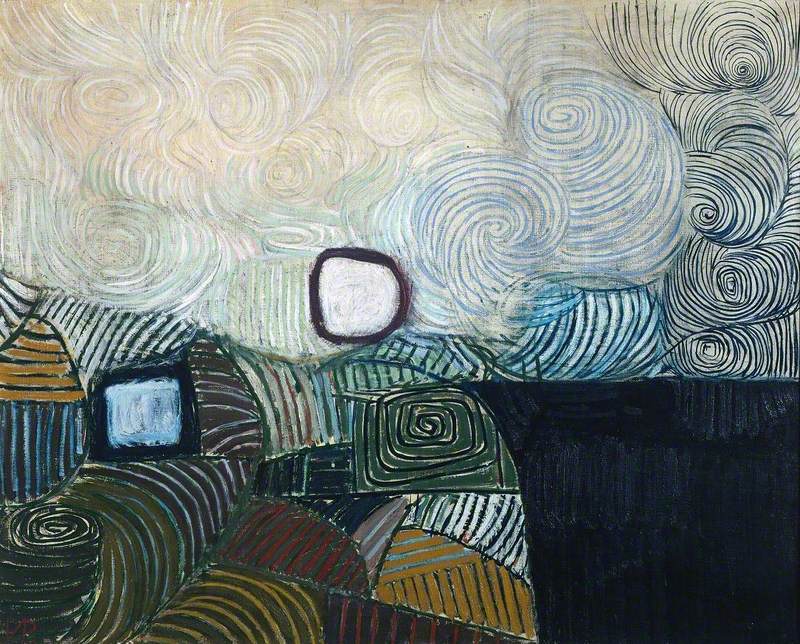
In tandem with the early small scale paintings, Pasmore had also produced a series of compositionally related collages in the late 1940s. At the beginning of the next decade he began a series of works featuring the spiral motif. Whilst they suggested references to the natural world Pasmore strongly denied any such association: 'What I have done... is not the result of a process of abstraction in front of nature, but a method of construction emanating from within.'
Use of the term 'construction' in his two-dimensional compositions, relates to the next stage of a constantly evolving search for new forms of expression and development in Pasmore's art. Painted spirals gave way to constructed reliefs which employed a pure, abstract language that referenced nothing other than itself. Constructed from a mix of man-made and machine-formed materials Pasmore viewed them as an expression of the modern age, containing within themselves the potential for generating new forms and ideas.
Walking through the final decade of this exhibition you will see that Pasmore accrued even more recognition and acclaim in his distinguished career. From major figurative painter to leading abstractionist, he now added the accolade of outstanding pedagogue and pioneer of post-war art school education. In 1954 he had been appointed Master of Painting at Durham University, based in Newcastle and here he collaborated with fellow artist and staff member Richard Hamilton to curate two groundbreaking abstract environment exhibitions.
His work across the country with architectural projects led in 1955 to his being appointed as an urban design consultant in the layout of the New Town of Peterlee in County Durham. The brief – to bring his artistic sensibilities to the landscape – culminated in the design of his iconic Apollo Pavilion (inspired by – and named after – the moon landings) at the end of the 1960s. By this time he had acquired a house in Malta where he and his family established themselves and where he returned to painting – and more particularly printmaking – using poured and sprayed pigment. There is a newly opened gallery in Valletta devoted to this period.
This timely, and overdue, survey of the most formative years of Pasmore's career comes to Chichester after opening at the Djanogly Gallery, Nottingham and finds a natural home within Pallant House Gallery's distinguished collection of modern British art and its innovative exhibition programme.
Anne Goodchild, co-curator of the exhibition
'Victor Pasmore: Towards a New Reality' ran from 11th March to 11th June 2017 and was a partnership exhibition with Djanogly Gallery, Nottingham Lakeside Arts. A fully illustrated catalogue is available in the Pallant Bookshop.
